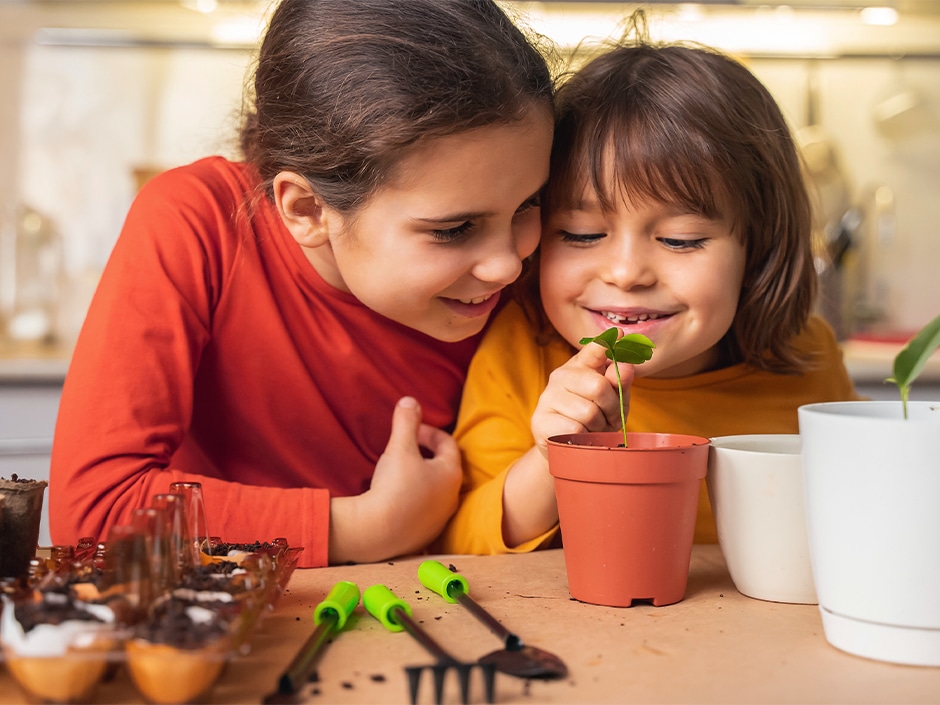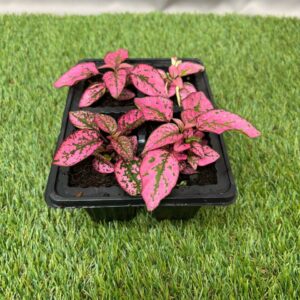Your Guide to Growing Fruit Trees
Trees, hedges and borders

There’s little as rewarding as harvesting fresh fruit every day. But fruit tree planting can seem intimidating: where to plant it, how to feed it, when do I prune it… We’re here to let you know that, really, growing trees is not that different from growing any other plant. And if you get the basics right, you’ll soon be snacking on crunchy apples or slicing fresh lemons for your G & T.
What is the best fruit tree for beginners?
Ideally, you’re looking for low-maintenance, disease-resistant, high-reward and fast-growing trees. So get yourself a pear tree. This hardy fruit tree tolerates the varying climates across South Africa and is generally disease-resistant.
The fig tree is another easy fruit tree: it’s extremely disease-resistant and low-maintenance and can easily yield an abundance of fruit. The trickiest part will be getting to the ripe fruit before the birds!
What is the best fruit tree for a show-stopping garden?
There’s a reason tourists flock to Japan in early spring! Cherry trees are considered to be some of the most beautiful flowering trees – and their fruit is extremely tasty too! Bonus: they’re easy to grow and can be grown in smaller spaces and containers.
What’s the best fruit tree to get the kids involved in growing?
Here, you’re typically looking for rapid-growing trees that are low-maintenance and will produce a high yield for a long period of time. While not technically a tree, a passion fruit (or granadilla) vine is a highly rewarding plant for kids. The vines climb rapidly and kids will enjoy tracking their growth every day. Their flowers are beautiful and mysterious, and they can bear fruit within the first season of planting.
Will fruit trees attract wildlife to my garden?
Fruit trees are a sure way to attract a variety of wildlife to your garden – both beneficial and otherwise! The blossoms of cherry, apple and peach trees will attract bees while the fruit of fig, pear and plum trees will attract a variety of birdlife (which you may end up competing with for the fruit!) and, depending on your location, squirrels, monkeys and baboons.
How to plant your fruit tree
The fruit tree-growing process isn’t all that different from the process of growing other types of trees. Getting the steps right means your tree will thrive and produce an abundance of fruit. Keep in mind that these are general planting guidelines; specific fruit trees may have specific requirements, so do some quick research before putting down roots.
Some tips to remember when planting trees:
- Dig a square hole measuring about 60×60 cm instead of a deep cylinder. This will encourage tree-root growth and healthy plant growth.
- Add necessary nutrients (compost and fertiliser) to the hole, but don’t go overboard – and ensure that you mix it in with existing soil when you fill the hole after planting. Remember: the roots will spread beyond the hole and nutrient-enriched soil, and you don’t want to suddenly shock the roots with soil that’s different in composition.
- Tickle the tree roots to loosen the root ball. This will encourage healthy early tree growth.
- Stake the tree to prevent wind damage.
- Watering new trees is essential – continue to water regularly until it’s established.
How to plant fruit trees in pots
If your space is limited, it doesn’t mean you should cross fruit trees off your gardening wish list. Grow them in pots – there are a number of varieties that will thrive. The mini or dwarf varieties typically grow very well in containers. Apple, pear, orange, lemon, stone fruit, fig and cherry trees are all fruit trees that grow well in pots.
Size matters! Plant trees in the biggest possible container that your space and budget allows. The bigger the space the roots have to grow, the bigger the tree and harvest will be.
Remember to water and feed your potted fruit tree regularly, especially in the flowering season! If the soil dries out, the tree will lose its blossoms and your bounty will be gone.
Where to plant fruit trees
Most fruit trees require full sun – that’s eight hours of direct light a day – in a sheltered position: growing trees don’t enjoy wind (just like us!).
Also remember to think ahead: plant trees in a location where they have space to grow – and bear fruit! And keep in mind that fruit trees drop fruit – you don’t want to be fishing guavas out of your swimming pool or sweeping peaches away from your front door!
Is one fruit tree enough?
Before buying your favourite fruit tree, check its pollination requirements. Some fruit trees are self-fertilising (we’re looking at you, peaches and cherries!). This means that the bees that visit your tree will pollinate it as they fly from blossom to blossom. Other trees – like apple, pear and avo – all need a partner plant nearby to assist with pollination. It doesn’t necessarily have to be in your garden, just in the vicinity. Peek over your wall to see if your neighbour has a partner for your new sapling.
Ready for your first fruit tree? Head to your local Stodels Garden Centre to pick it out. And remember to chat to our friendly garden experts. They’ll be able to answer all your questions and give you important nuggets on planting and growing trees that you didn’t know you needed!
Here are more helpful articles to help you and your growing trees:
You might also like
Shop online
-
- Sale!
MINI ADULT 2KG
- Original price was: R348.99.R279.19Current price is: R279.19.
- Add to cart Learn More




